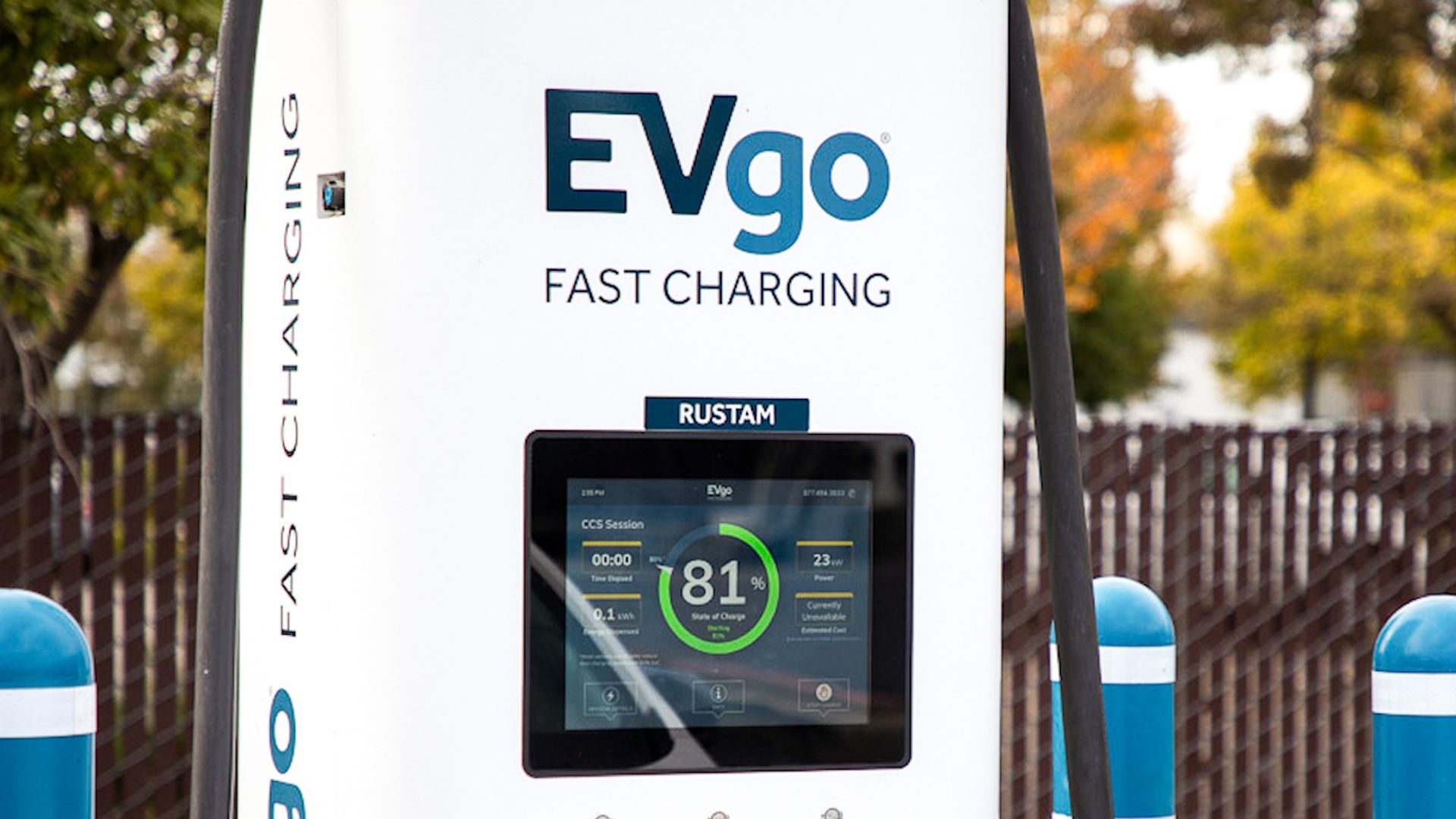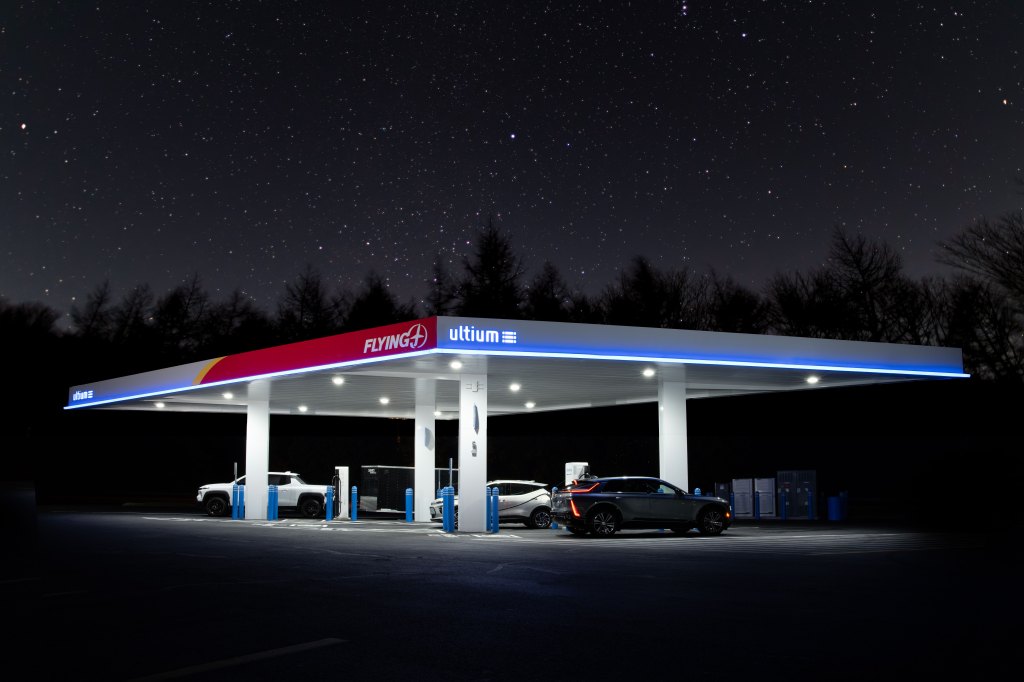
$7.5B EV charging network plan has 1 station in 2 years — but momentum is growing
Media Landscape
See how news outlets across the political spectrum are covering this story. Learn more[Jack Alymer]
IN 20-21, CONGRESS PUT A PLAN IN PLACE TO SUPPORT ELECTRIC VEHICLE CHARGING INFRASTRUCTURE ACROSS THE UNITED STATES. BUT TWO YEARS AND 7-POINT-5-BILLION-DOLLARS LATER — THERE’S NOT MUCH TO SHOW.
IN FACT – THE PROGRAM IS RUNNING IN ONLY ONE STATE, OHIO.
AND EVEN THERE, JUST ONE CHARGING STATION HAS OPENED. THE INITIATIVE, KNOWN AS THE NATIONAL ELECTRIC VEHICLE INFRASTRUCTURE PROGRAM FIRST BROKE GROUND ON THE NATIONS FIRST NEVI CHARGING STATIONS IN OCTOBER of THIS YEAR
THIS IS THE PILOT TRAVEL CENTER ALONG INTERSTATE 70 AT U.S. ROUTE 42, WEST OF COLUMBUS.
THIS STATION HOSTS 4 FAST CHARGING PORTS THAT GIVE ENOUGH POWER TO CHARGE AN E-V UP TO 80% IN ROUGHLY 40 MINUTES.
OHIO’S SECOND ROUND OF CHARGING STATIONS WILL INCLUDE 25 ADDITIONAL LOCATIONS ALONG INTERSTATES, U.S. ROUTES, AND STATE ROUTES. IN TOTAL, THE STATE WILL RECEIVE 140 MILLION IN NEVI FUNDS OVER THE NEXT FIVE YEARS.
WITH JUST ONE STATION TO SHOW – WE ASKED – WHAT’S THE HOLD UP EVERYWHERE ELSE?
TO FIND THE ANSWER – LET’S FIRST ESTABLISH SOME BACKGROUND.
TODAY- THE UNITED STATES HAS AROUND 180-THOUSAND ELECTRIC VEHICLE CHARGERS.
THAT’S ACCORDING TO THE DEPARTMENT OF ENERGY.
IT’S A LONG WAY OFF FROM THE 500-THOUSAND TARGET SET FOR 20-30.
GABE KLEIN | EXECUTIVE DIRECTOR, JOINT OFFICE OF ENERGY AND TRANSPORTATION]
“the goal we have set for the highway charging is four charging ports, 150 kilowatts, every 50 miles. that is the beginning of a network, we are seeding it, we think the private sector will also come in. there also federal and state funds to build that network in over the next 10 years.”
[Jack Alymer]
The initiative, AIMS TO GIVE MONEY TO EACH STATE FOR FAST CHARGERS NEAR FEDERAL HIGHWAYS.
BUT BEFORE ANY CONSTRUCTION CAN GET STARTED- THE GOVERNMENT HAD TO HIRE A STAFF TO DELEGATES THOSE FUNDS AND CREATE STANDARDS.
STATES THEMSELVES MANAGE NEVI FUNDS AFTER PLANS ARE APPROVED. THIS ALLOWS THEM TO DELEGATE THE CONSTRUCTION AND OPERATION OF CHARGING STATIONS TO PRIVATE FIRMS.
AFTER THAT- CONSTRUCTION PERMITTING CAN TAKE MONTHS.
AND ONCE THE WORK IS STARTED – SOME EXPERTS SAY THE BUILDING PROCESS CAN TAKE UP TO 18 MONTHS TO COMPLETE.
NOT TO MENTION THE ‘BUILD AMERICA, BUY AMERICA’ ACT SAYS THAT WHEN THE GOVERNMENT PROVIDES MONEY FOR BUILDING INFRASTRUCTURE, THE MATERIALS USED TO BUILD THEM SHOULD BE MADE IN THE U-S.
DESPITE THE CHALLENGES – THOSE LEADING THIS INITIATIVE SAY THEY ARE ON PROCEEDING ON PACE.
PENNSYLVANIA WILL SOON JOIN OHIO WITH IT’S FIRST NEVI-FUNDED CHARGER.
SIX additional STATES ARE CONTRACTED FOR INITIAL CHARGING SITES.
AND MORE THAN A DOZEN OTHER STATES ARE ACTIVELY SEEKING BIDS FROM THE PRIVATE SECTOR.
IN OHIO, CONSTRUCTION IS EXPECTED TO BEGIN ON 24 MORE FAST CHARGING STATIONS FUNDED BY NEVI.
[GABE KLEIN]
“Specifically what we are doing, we are focused on building equitable, easy to use, safe, reliable network, just as we have now for gasoline. if you want to travel within your city or across the country within a rural area you can find gasses easily. we wanted to be just as easy to electric charging.”
[Jack Alymer]
SOME ARE CONCERNED THESE EFFORTS AREN’T MOVING FAST ENOUGH TO CATCH UP WITH E-V DEMAND. SINCE BIDEN TOOK OFFICE, INVESTMENTS IN THE ELECTRIC VEHICLE SPACE HAVE TAKEN OFF, MORE THAN 85 BILLION HAS BEEN PUT TOWARDS VEHICLES, BATTERIES, AND CHARGERS IN THE U-S.
OF ALL VEHICLES SOLD GLOBALLY, ELECTRIC VEHICLES MADE UP JUST FOUR-PERCENT OF SALES IN 20-20.
THAT NUMBER ROSE TO 14-PERCENT IN 2022.










